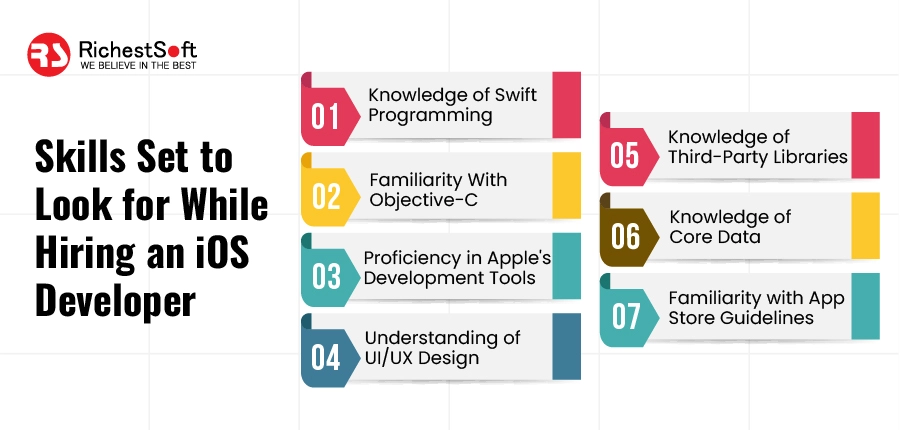Mobile applications have rapidly expanded into traditional industries and more outré fields. People of all ages have widely adopted mobile technology. The UX of an app often separates it from others in its category. Apps that fail to provide a pleasant user experience will not succeed. Modern smartphone and tablet customers have high software expectations. If you want your app to flourish, UX (user experience) must be more than just design. The top mobile app developer carefully considers mobile design to provide the finest possible service to their clientele.
Technological development profoundly impacts users and their interactions with your brands, goods, and services. That is why you must follow the latest tendencies in mobile app development. Ensure your mobile app is fully up-to-date and created with innovative promotional strategies.
Today’s methods of operation are notably dissimilar to those of yesteryear. The use of mobile applications is crucial. We need these apps every day. Thus, building an app to grow your business is a smart move. We have selected the top 15 mobile app design tasks.
Top Tips for Designing Better Mobile Apps
There are many factors to consider while making a mobile-friendly design. Here, we have compiled several suggestions for improving your design’s usability and efficiency.
1- Get to Know Your Users
Familiarize yourself with the person and their needs. You will be able to create an app that interacts with your target audience with the help of this data.
2- Use Consistent Design Language
Create a unified aesthetic for your program by using the same colors, fonts, icons, and interaction styles throughout. Maintaining a uniform approach benefits the user experience and the company’s reputation.
3- Optimize for Touch Interactions
The primary means of engagement in mobile apps is through touch. Thus, all design elements must be simply tapped, swiped, and scrolled. Design for touch interactions by making touch targets the right size, placing them where users’ thumbs naturally rest, and giving them visible feedback.
4- Incorporate Meaningful Animations
Carefully crafted animations can improve usability by serving as visual signals, easing transitions, and offering feedback to the user. To effectively guide users and create magnificent moments within the app, utilize animations wisely and with intent.
5- Ensure Accessibility
People who use wheelchairs or other assistive devices may use your software without problems. To make your app accessible to the vast possible audience, you should utilize appropriate color contrast, give alternate language for images, and test for compatibility with assistive technologies.
6- Minimize Cognitive Load
Cognitive load refers to the brain power required to use the app. The human brain has limited processing power, and when an app provides too much data at once, it might overwhelm the user and make them abandon the task. Mainly companies focus more on this concept to deliver high-quality services. The most successful mobile app studios constantly experiment with new business methods to increase annual revenue. Thus, the main point is that mobile apps should be unique and have amazing features to attract users’ attention. You can now easily earn a six-digit income by making those applications with the highest market demand.
7- Keep the Design Responsive
Apps must support several platforms. A market section will always choose an alternative, regardless of platform dominance. The iPhone and Android have both reached their peak popularity. Unless the company aims squarely at one customer demographic, we should now design for a 50/50 split. Analyze and solve any problems that may arise with various gadgets.
8- Visualization
Intriguing mobile designs use striking visuals and attractive color palettes. In pursuing excellent UX, one will not succeed using a wide range of colors, textures, and composition tactics, as with traditional visual art. Weighty messaging apps are unpopular. Due to the limitations of mobile device screens, designs that rely heavily on small text will turn off potential customers. Visually appealing features keep users interested and coming back for more of the same high-quality interactivity.
9- Download UI Templates
Templates for mobile app user interface design are now available. The time and money needed to create the apps are cut significantly. The objective behind downloadable user interface templates is to quickly and easily develop a working prototype of the product you envision. The premade layouts provide programmers with a solid foundation to build their applications.
Mobile app design services are needed to create apps with features including a positive first impression on users, giving apps a visually appealing design, and using efficient design tools. Mobile app design services typically use Photoshop, HTML, Coreldraw, and Illustrator. The mission necessitates full device compatibility, so it was built bearing resolution, graphics, screen size, and other perspectives in mind.
10- Identify the Approach
Choosing the best method for creating an app is crucial. The best app development strategies consider the client’s available resources (both time and money). Native, Web, and Hybrid are just some options available to you.
11- Update Regularly
Security and compliance requirements can be a crucial stumbling barrier to efficient production. Consulting with the back-end staff, usually better at preventing data breaches, can help with accessibility difficulties. While an annual strategy for compliance may be manageable, security issues require constant monitoring.
12- Market Requirements
App development is just another industry where marketing is essential. Customers need to be understood. Construct user scenarios that demonstrate how the program will be used by its intended users. There are numerous interdependent elements. Therefore, research specific to the aims of this app is required.
Users appreciate it when products feature unique touches that demonstrate the developers considered them as individuals. When combined with usability testing, heuristic assessment can help developers make UI consumers love. Here, interactivity is the one thing we have in common. The optimum user experience can always be guaranteed with the help of interactive apps.
13- Follow Thumb-Rule
UX designers need to know how a user grips the smartphone and uses hand motions, such as the path their thumb takes across a touchscreen. The intended audience will most likely consist of right- and left-handed people. Because of this, circular flows that head down the screen are preferable to linear ones. Most users cannot reach interface items moved to the top of the screen. Thus, the display’s footer should house the most-used controls.
14- Adjustable
As a result, you need to make the user interface of your mobile app flexible enough to accommodate changes. It may require prioritizing essential features over others. Sometimes you are even able to tack on a bit more. The external buttons’ functions can be moved to the internal ones, sometimes making interface partitioning unnecessary. When making changes by hand, the font size should always be legible. In addition to this, the entire interface system needs to work with both portrait and landscape orientations. In addition, it makes sense to design a left-handed mobile app version.
One of the most significant features is how adaptable the design is. Hundreds of options for spectacles can be found commercially. Screen sizes, capabilities, and resolutions vary widely between them. There are versions with and without a button.
15- Set Information
There are crucial differences between app design and responsive web development. Apps will build on the assumption that users will be more proactive once they have downloaded the app of choice, as opposed to websites, which assume that users would passively seek what they want or browse elsewhere.
Providing consumers with the appropriate data, design, and audience knowledge is crucial to fostering personal relationships and involvement. It is prime to get the pertinent details correctly, including any instructions or determining bits of information, into a cohesive whole that complements the visual-first design without detracting from it.
FAQs
Q1: Why is mobile app design important?
Ans: Designing for a positive user experience in mobile apps is crucial. The quality of an app’s design can significantly impact how people feel about the company making it. It is aesthetically beautiful and makes it simpler for consumers to get about the app and locate what they want.
Q2: What key design elements can make my mobile app more user-friendly?
Ans: Key design features can make your mobile app more user-friendly. Start with intuitive navigation and a simple app structure. Second, use eye-catching imagery and colors. Finally, mobile-optimize your content. A mobile-first approach will make your app appear fantastic on every device and not overwhelm users.
Q3: How can I make my mobile application usable for people with disabilities?
Ans: Accessibility is the main factor in a successful mobile app. Accessibility standard practices make your software usable for everyone. It includes adjusting font size, adding descriptive labels and instructions for user interface elements, properly color-coding navigation elements, and ensuring all keyboard-accessible functionalities. Mobile accessibility testing services can uncover difficulties before launch.
Q4: Are there any best practices for designing mobile app interfaces that encourage engagement and in-app purchases?
Ans: Making mobile app interfaces fun is the best way to boost engagement and in-app purchases. It includes making the app easy to use, helping customers discover what they want, and providing helpful assistance when issues arise. Push alerts and in-app prizes can also encourage app usage and purchases.
Q5: Do you have any tips for user testing and gathering feedback during the mobile app design?
Ans: Absolutely! Organize user testing and feedback during mobile app design. Break the product into little pieces to test each part. To acquire diverse app feedback, choose a diverse user sample. Finally, test your app’s iterations frequently. With these tips, you will obtain product insights and give customers the ideal user experience.
Conclusion
There is a current and growing need for mobile applications. There is currently a significant potential for financial success in app development. These days, everyone seems to have a smartphone. It can be accomplished quickly by choosing the most lucrative mobile app form. Consult a leading mobile app development business in India to create a one-of-a-kind and highly functional website.






Leave a Reply